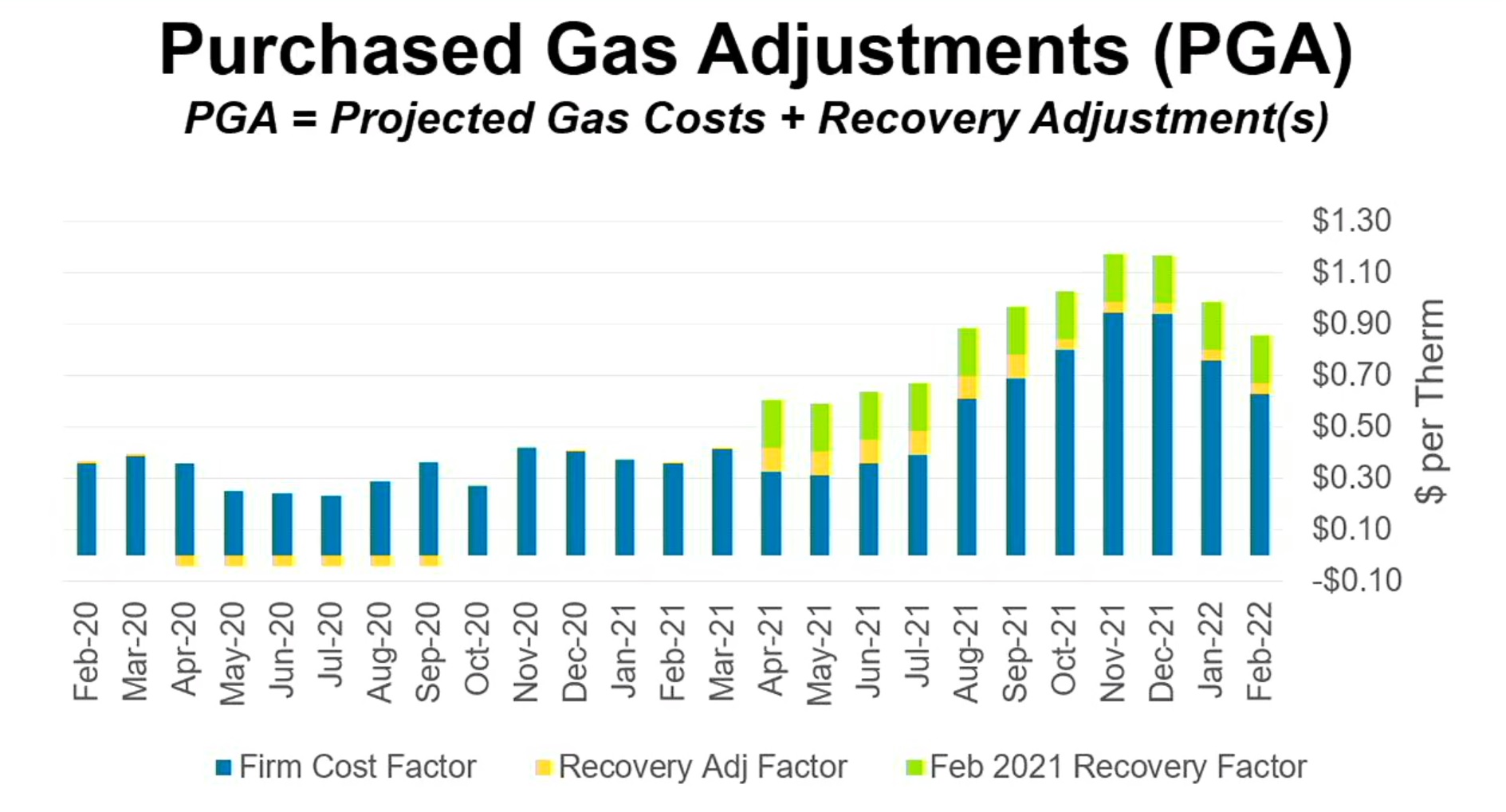If you rely on heat from natural gas in the winter time, you might want to start saving some money for the winter.
Springfield City Utilities Chief Financial Officer Amy Derdall warned the Springfield Board of Utilities about the rising cost of natural gas at a meeting May 27.
“The unfortunate news is that the prices are simply high,” Derdall said. “We’re doing everything we can. If things don’t turn around, our customers this coming winter will see higher prices than they did in the past one by quite a bit.”
A dekatherm (DTH) is a unit of energy equal to one million British thermal units, or 10 therms. The dekatherm is used in the natural gas industry to measure the heating value of a specific volume of natural gas. A dekatherm is about 910 to 1,026 cubic feet of natural gas, according to the U.S. Energy Information Administration.
According to the U.S. Energy Information Administration, the average price of natural gas in Missouri was about $9.09 per dekatherm at the end of March 2022. That's the highest natural gas prices have been in a decade, but not the highest prices in this century. Historical data shows that natural gas prices peaked at $14.85 per dekatherm in December 2005, but an upcoming increase in prices will result in once-in-a-decade costs for gas buyers.
While most Springfield residents probably have a hard time thinking about heat at the start of June, which for many marks the beginning of air conditioning season, the people who watch the utility company’s coffers are watching fuel costs.
The average residential utility customer in Springfield will pay about $19 more per month to heat their home in the winter of 2022-23, compared to the previous winter.

Storing fuel for later use
Commercial and industrial customers will feel the impact of higher gas prices first, as they are more likely to use gas in the summer and fall (for uses other than HVAC). When cold weather arrives in December, and into the coldest months of January and February, residential gas consumers who use natural gas to heat their homes will feel the cost burden.
City Utilities has 1.2 million dekatherms of natural gas in storage, which is about half of the utility’s overall natural gas storage capacity of 2.4 million dekatherms.
Derdall explained that by buying in advance and storing gas, City Utilities can save on the gas it buys. The gas in storage has a $4.23 average cost per dekatherm. However, a year ago, the cost was $2, and in 2020, the cost was $1.71 per dekatherm.
“The concern is this summer that costs are going to continue to go up, and so you need to go ahead and inject programmatically, as you usually do, in order to get that weighted cost of gas toward the winter,” Derdall said.
World events, like the Russian invasion of Ukraine affecting the worldwide market for natural gas, and a decrease in natural gas production in the United States are both impacting the cost of natural gas to the consumer.
“If we continue to fill up the rest of what we have at $8 natural gas, then our average inventory cost would be $6,” Derdall said.
Expect more communication this fall

CU Chief Customer Officer Brent Baker said natural gas customers should expect to see some messages about winter heating and the rising cost of natural gas later this fall, as the seasons change and City Utilities prepares for the winter.
“The communications team was working on a plan this year to communicate infrastructure investment as we communicate reliability. We’ve thought about shifting and going back to that fall message of preparing for winter,” Baker said.
Natural gas is trading at about $9 per dekatherm. Derdall said these prices are likely to increase and reach a plateau sometime in 2023.
“You’re waiting until about 2024 before we expect natural gas prices to come back down into that $5 range,” Derdall said.
City Utilities sold about 11,986,000 dekatherms of natural gas in 2021. Residential customers made up 47.2 percent, or around 4.1 million dekatherms of that consumption. Commercial users accounted for 4.2 million dekatherms of consumption, while a little more than 2 million dekatherms of natural gas went to industrial consumers.
In 2021, there were 76,020 residential customers on CU service. Each user consumed an average of 74.5 dekatherms of natural gas over a year. The average commercial gas customer uses 502.4 dekatherms of natural gas in a year, while industrial consumers use 11,356.7 dekatherms.
At the end of 2021, there were 8,432 commercial customers and 184 industrial customers in Springfield. The average industrial user spent $50,422 for City Utilities natural gas in 2021.
On Feb. 14, 2021, outdoor temperatures in Springfield reached a high of 6 degrees. Users consumed 125,504 dekatherms of natural gas that day, representing the single-day peak for the year.

